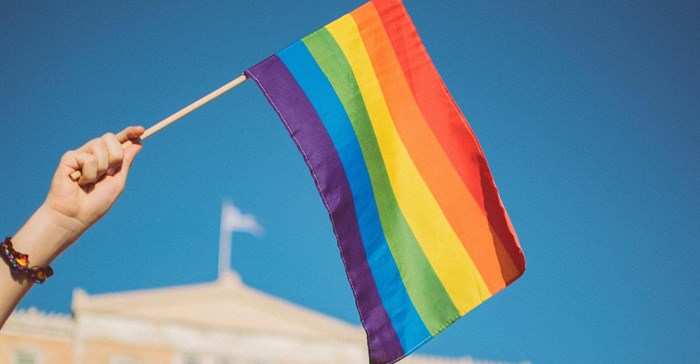The ad is a 3-minute story about a young woman who visits her family with her girlfriend. She gets home to a warm welcome from her mom but her dad is not so warm to her and her girlfriend. Her siblings arrive and they, along with their partners and kids, get a warm welcome from the dad. After a couple of days showing the young woman spending time with her girlfriend, and the dad clearly being cold, we are shown the parents talking in their bedroom. The next morning, we are shown the dad painting the front picket fence with rainbow colours. There is happiness and hugs, and then a cut to a message of support about how loving starts from home. Excerpts from their conversation are below:
Madeley: My timeline was buzzing with people sharing how much they loved the new Oreo ad. The entire ad had me in tears and I quickly shared the link with my colleague Larry, prompting him for a conversation after watching the piece of content.
Khumalo: I hadn’t seen the ad or any of the engagement around it yet. I watched it with mild curiosity at first, because I didn’t know what it was about. My first thought was that it would leave people warm and fuzzy, like a pride march in Brighton, United Kingdom would. But beyond that, it was just ok. Not ground-breaking.
Madeley: I burst into tears, maybe it’s a father-daughter thing, I don’t know. I felt something there about how complicated the relationship between a father and daughter can be, especially around notions of being good enough.
Khumalo: I get how someone can interpret it like that, that relationships are complex and not just about one thing. However, this ad has a singular message and it is about confronting homophobia within families and encouraging acceptance. And it is precisely at that point that the ad lands a false narrative.
Madeley: You are right. The human truth is not about being good enough to your parent, or any such ‘normalised’ dynamic between parents and children. The human truth is about homophobia in families.
Khumalo: That it’s so open to interpretation emphasizes to me that the ad perhaps was not made for the LGBTQIA+ specifically. It’s a story about a lesbian woman, but the intended audience is heteronormative, and perhaps a bit of a wink to the LGBTQIA+ community. And maybe that’s ok because heterosexual minds are largely the ones we want to change to help end homophobia. That change starts in families.
Madeley: I never thought of it like that. It’s easy to think that work that is pointed to a cause will always be appreciated by people in that community. But this hits different. Cause-related work especially needs to be good work, truthful work, because its impact is not only consumerism but human progress.
Khumalo: The false narrative here is really how they clean up a messy process into this simple take. This is a situation that one visit to your folks will seldom fix, or make right. Your homophobic dad doesn’t change his mind about your same-sex partner after just a few days. It takes work, and it’s messy. I would have loved for some mess there. There was some pinkwashing, trying to wrap everything up with a nice beautiful bow and present it to progressives and liberals.
Madeley: It’s tough to try and capture something so complex in a few minutes and make it make sense to all. But the issue here with something as material as homophobia is that one would rather not touch the subject than misrepresent it. Purpose must always be followed through by honest and meaningful engagement, not purpose washing.
Khumalo: They could have done a few tweaks to the script. Maybe add a timeline mechanic that shows a series of visits over time, and perhaps some ageing too. To show that there is an element of time. Change takes time. Especially on matters to do with sexuality in all sorts of families. That her dad turned around after a few days and painted a rainbow is a little on the ridiculous side.
Madeley: I guess the question is about reflecting the truth as best as one can in a short space of time. And because this is advertising, one wonders what the effectiveness of well-meaning work that misses nuance could be? If people are seeing it and celebrating it, then it’s a success?
Khumalo: And the rainbow too, is starting to be overtraded in my opinion. It’s the easiest way lately to get people to root for you as a brand. It does not matter whether you are committed to the cause, or whether you truly understand the issues. Rainbows are being thrown about, slapped on campaigns and merchandise and we are buying them. On one hand, this commonplace-ness of the rainbow representing LGBTQIA+ inclusivity is great, it asserts some kind of presence and advocacy. On the other end, it makes me wonder about how genuine these engagements are, especially when they get key things like the ‘conversion’ of a homophobic father, wrong.

Madeley: I am not a fan of the product linkage. It makes little sense. In the content itself, the product is quite subliminal. I am not sure what the messaging intent is? It’s perhaps a message of solidarity to the LGBTQIA+ community.
Khumalo: The question to ask now is on the role of brands in our society? To stoke change? To challenge humanity? To reflect humanity? To contribute to culture? All the while selling product? The Pride flag will sell the product, to both ‘pink money’ and to their allies. Guaranteed. Perhaps we are ushering in an era where the pride rainbow is the new “puppies and babies and kittens” of advertising? What does that mean for the LGBTQIA+, given the various issues that plague this community? Perhaps that’s the territory that brands that want to make change ought to be stepping into.

